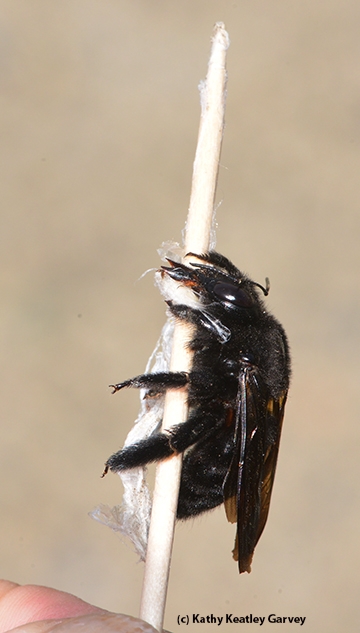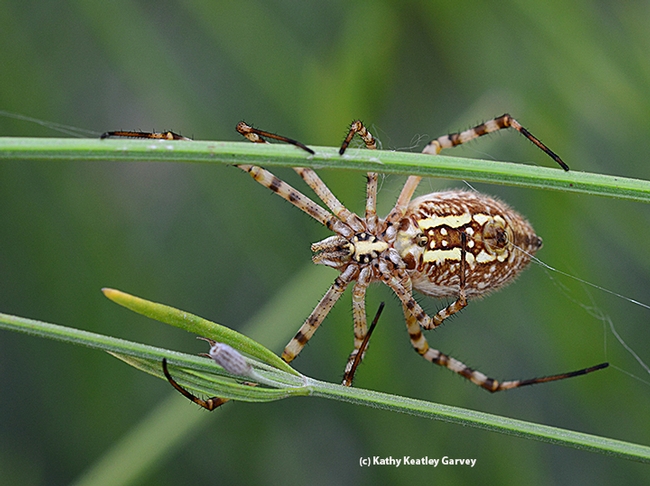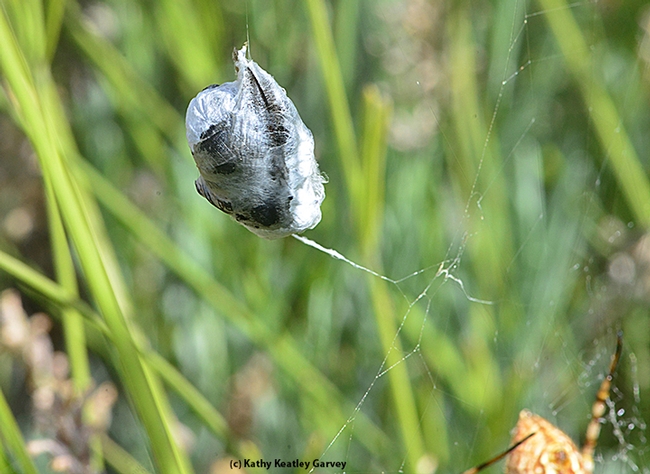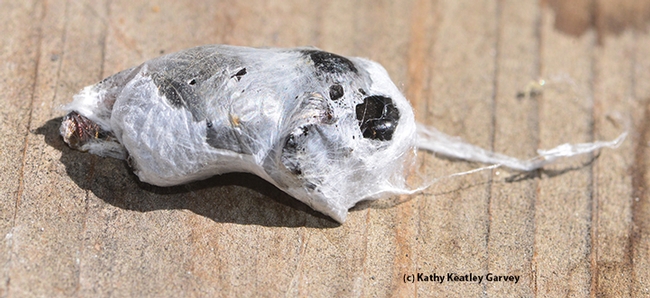
Most of its prey are honey bees, sunflower bees or hover flies foraging in the nearby lavender.
One wrap, however, looked like it contained a huge black bee, the Valley carpenter bee. It was either that or a bumble bee!
We decided to find out. With a toothpick, we borrowed the prey from the spider (it already had 21 wrapped prey and wouldn't miss it).Taking a toothpick, we carefully pulled back the sticky silk cover.
Yes, it was a Valley carpenter bee (Xylocopa varipuncta), a female. The Xylocopa varipuncta females are solid black while the males are blond with green eyes. You've probably seen these bees buzzing around your yard or in a park. The largest bees in California, they're about an inch long. They're named the "Valley carpenter bee" because they're common in the Central Valley.
They're pollinators but some folks consider them pests. Using their mandibles, the females tunnel through wood, such as fence posts and telephone poles, to make their nests. They prefer untreated wood so if you varnish your wood, they'll probably look elsewhere. They do not ingest the wood. Sometimes they'll drill a hole in a dead or dying tree.
This one apparently couldn't exit the sticky web before the predator approached it and delivered its venomous bite.
Fortunately, it wasn't the yellow-faced bumble bee we've seen nectaring on the butterfly bush!
Attached Images:

A banded garden spider (Argiope trifasciata) straddling lavender stems. (Photo by Kathy Keatley Garvey)

What prey is this? It appears to be a huge black bee, a female Valley carpenter bee. (Photo by Kathy Keatley Garvey)

Close-up of the prey, which turned out to be a female Valley carpenter bee. (Photo by Kathy Keatley Garvey)